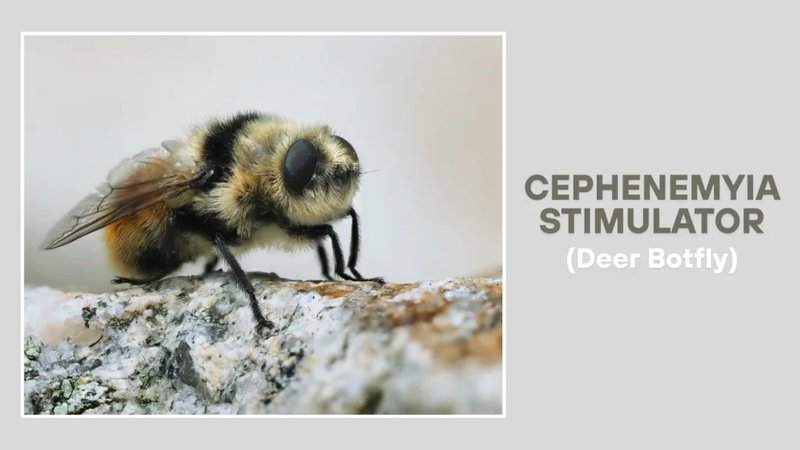
Imagine a warm, humid environment where animals roam freely. These are the perfect hunting grounds for botflies. Their life cycle hinges on finding the right hosts, which means they need specific habitats to flourish. The factors contributing to their activity might seem obscure, but once you break it down, it all makes sense. Let me explain how different environments invite botfly populations to thrive.
The Tropics: A Perfect Playground for Botflies
When you think of tropical regions, images of lush jungles and vibrant wildlife likely come to mind. This is **botfly central**! The climate in tropical areas is warm and humid, promoting the life cycle of the botfly. These conditions are perfect for their larvae, which need warmth and moisture to thrive. The abundance of wildlife also means there’s no shortage of potential hosts.
In places like Central America and parts of South America, botflies can find hosts in various mammals, including cattle, deer, and even humans. The higher the biodiversity, the better the chance for botflies to find a suitable host. Honestly, if you’re wandering through a tropical rainforest, you might unknowingly share the space with these little creatures!
In the tropics, botflies tend to lay their eggs in the fur of mammals. When a host animal comes into contact with the eggs or larvae, it can lead to a gruesome infestation. These conditions make tropical regions prime real estate for botfly activity.
Factors Contributing to Botfly Activity in Tropics
- Humidity: Moisture helps larvae develop.
- Temperature: Warm climates are ideal for botfly breeding.
- Diversity: A variety of potential hosts increases their chances of survival.
The Plains and Grasslands: A Surprising Habitat
Next, let’s journey to the vast plains and grasslands, where you might not expect to find botflies. Surprisingly, these open areas can also be very inviting for botfly populations, especially for species like the **cattle botfly**. The large herds of grazing animals provide an ideal habitat for these flies.
Grasslands are typically home to livestock like cattle and sheep, making it easy for botflies to lay their eggs in the animals’ coats. When the larvae hatch, they burrow into the animal’s skin, causing irritation and discomfort. In rural areas, where cattle roam freely, the risk of botfly infestations increases significantly.
You might be wondering how botflies adapt to such environments. Unlike tropical forests, grasslands have less cover, making it easier for botflies to spot potential hosts. This serves as a reminder that even seemingly uninviting habitats can be fertile grounds for these pests.
Key Elements for Botfly Presence in Grasslands
- Access to hosts: The presence of livestock is crucial.
- Open space: Less cover makes it easier for botflies to fly and find hosts.
- Climate: Warm temperatures favor their life cycle.
Forests: A Unique Habitat for Botflies
While we often associate forests with mystery and beauty, they can also be breeding grounds for botflies. Forested areas provide cover for various mammals, including deer and wild pigs, which are common hosts for these pests. Here’s the thing: food chains in these ecosystems can be complex, offering ample opportunities for botfly activity.
In forests, botflies can be more difficult to spot, and their impact on wildlife may be less visible than in open grasslands. The dense foliage provides an optimal environment for botflies to lay their eggs. As animals walk through these areas, they can unknowingly become carriers of botfly larvae.
The forest environment not only offers cover but also the perfect humidity levels needed for the larvae to thrive. Just imagine the drama unfolding in the forest as these little creatures go about their life cycle, hidden from view.
Elements Favoring Botfly Survival in Forests
- Hideouts: Dense foliage provides cover for the flies.
- Host variety: Various mammals inhabit forest ecosystems.
- Climate: Moderately humid conditions support larvae development.
Urban Areas: An Unexpected Influence
You might be surprised to learn that even urban environments can host botfly activities. As cities expand into rural areas, wildlife encounters with human habitats increase. This change creates unique conditions for botflies to thrive. People often overlook these risks, but they’re vital to understand.
Urban parks and green spaces can serve as mini-ecosystems where botflies find their hosts. Stray animals, such as dogs and cats, may become affected by botflies as they venture into these spaces. When animal populations move closer to urban areas, the probability of botfly infestations can rise.
While urban areas might seem less likely to support botfly populations, the intersection of wildlife and human habitats makes it possible. You could say that in this case, **city living** can turn into **fly breeding**.
Key Factors for Botfly Activity in Urban Areas
- Proximity to wildlife: Stray animals can bring botflies into urban settings.
- Green spaces: Parks and gardens provide habitats for botflies.
- Climate control: Urban heat islands can create suitable temperatures.
Why Understanding Botfly Habitats Matters
Understanding which habitats are most susceptible to botfly activity is crucial for several reasons. First, it helps in prevention. If you know where botflies like to thrive, you can take steps to protect yourself and your pets, especially if you live in or visit affected areas.
For instance, if you’re traveling to a tropical region, taking precautions like wearing protective clothing can help you avoid these pests. Recognizing the signs of infestation in animals is another important step in keeping botflies at bay.
Moreover, research and awareness can lead to better management strategies for livestock and wildlife. It’s all about finding balance in ecosystems while protecting both animals and humans from the discomfort caused by these unusual pests.
Final Thoughts on Botfly Habitats
In the world of pests, **botflies** have a unique place due to their life cycle and the habitats they choose. From tropical jungles to urban parks, these environments play a significant role in botfly activity. By understanding which habitats are more likely to harbor these annoying creatures, we can better prepare ourselves for potential encounters.
Whether you’re hiking in the woods, wandering through grasslands, or just enjoying a day in the park, being aware of botfly habitats can help you stay informed. Remember, knowledge is power, especially when it comes to our creepy-crawly friends. So, next time you hear a buzz, think twice—it might just be a botfly!

